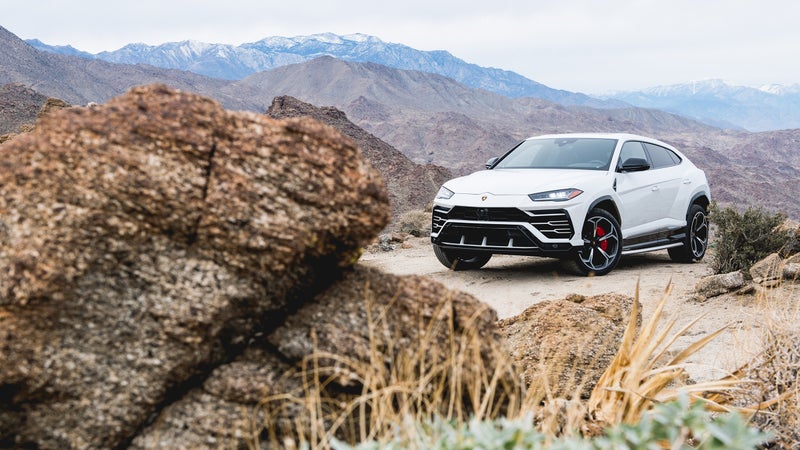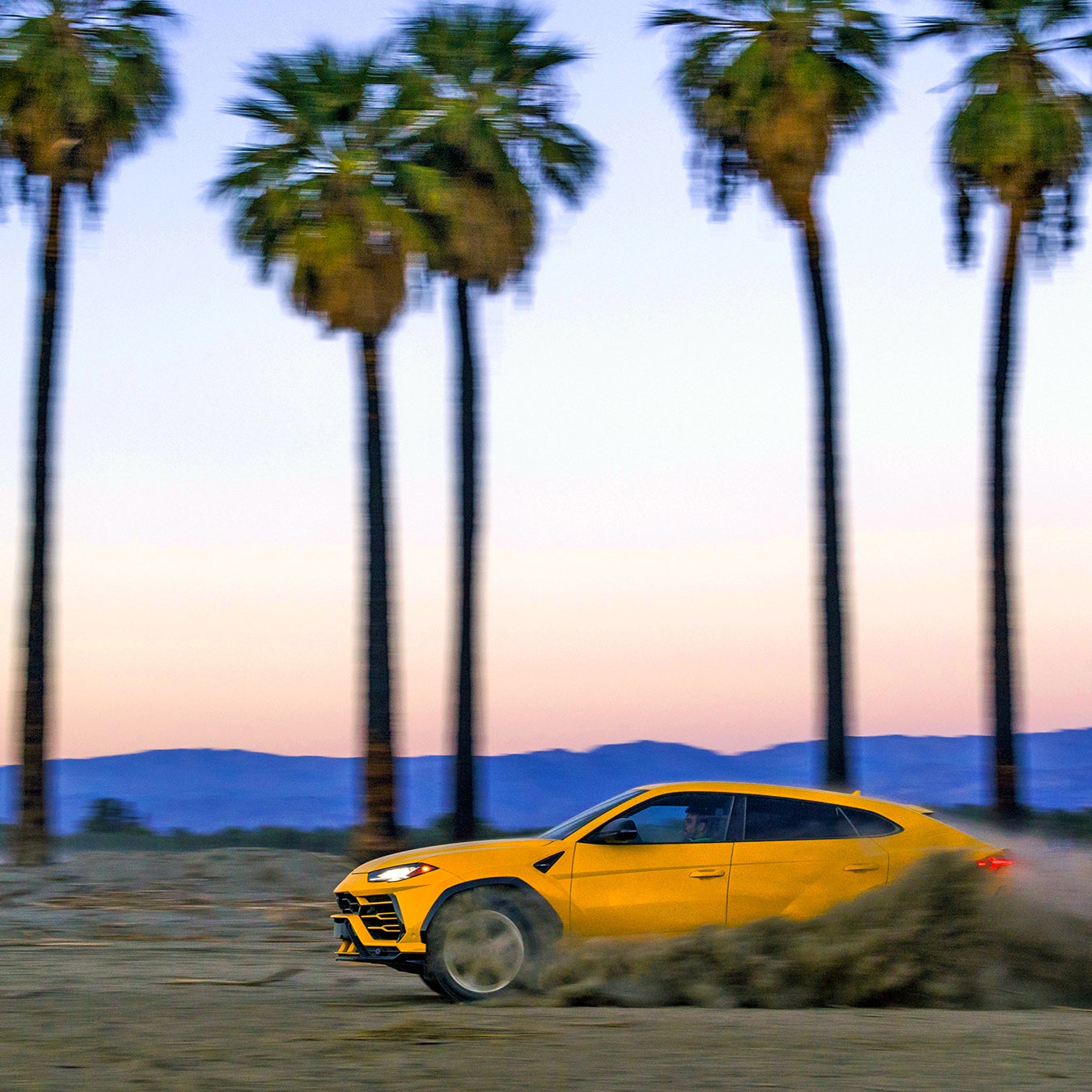Lamborghini’s new Urus does zero to 62 miles per hour in 3.6 seconds, has the largest brakes ever fitted to a production car, and it’s…a family-friendly all-wheel-drive crossover. I took it both off-road and to a race track to find out if it’s as awesome (and practical?) to drive as those stats would suggest.
What Is It?
Strip away the performance attributes and price tag of the Urus and you’re left with a practical, easy-to-drive crossover. Its platform is based on the Audi Q8 and Bentley Bentayga (albeit extensively modified). Its twin-turbo V8 is similar to the one found in the new Porsche Cayenne Turbo. All that Volkswagen Auto Group sharing is a good thing, because you’ll be able to enjoy what Lamborghini does best—style—without having to worry about what it’s traditionally done worst—reliability.
Despite all those shared parts, the Urus still sounds, smells, and feels like a Lamborghini. Albeit one with five seats, a power rear-lift gate, and room for a dog. And, thanks to clever technology like height-adjustable air suspension and switchable driving modes that alter everything from power delivery to all-wheel-drive settings, it’s able to transform from a tall off-roader to a low and aggressive track car at the push of a button.
Oh yeah, and it has a $200,000 starting price. Lamborghini tells us that most of its customers so far have tacked on about $40,000 in options.
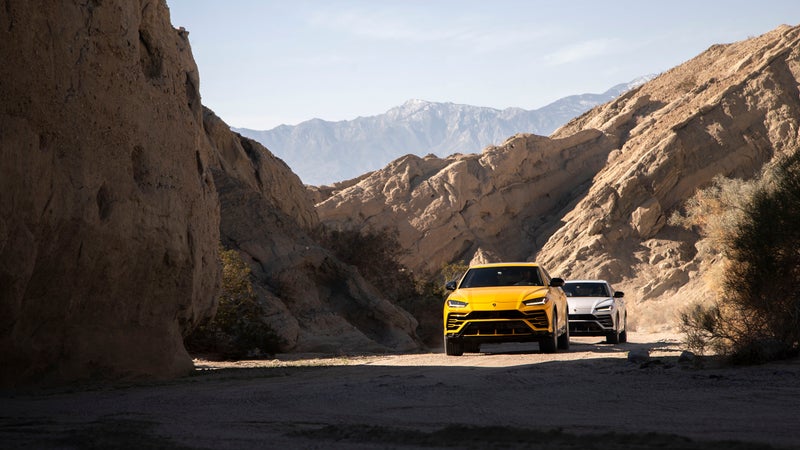
Who’s It For?
Well, it’s for rich people. It competes with up-market SUVs like the Mercedes-Benz G-Wagen and the Range Rover—both of which can be optioned well into the mid $200,000 range. And the Urus undercuts truly opulent competitors like the Bentley Bentayga and Rolls-Royce Cullinan, which can see prices north of $400,000.
Compared with all of the above, the Urus is faster, handles better, and looks much more dramatic. But it’s also just as practical, safe, and easy to drive as a large Audi, because it’s based on the same chassis. And that means Lamborghini is going to be able to double its production volume with this thing; the company expects most Urus buyers to be first-time customers for its brand.
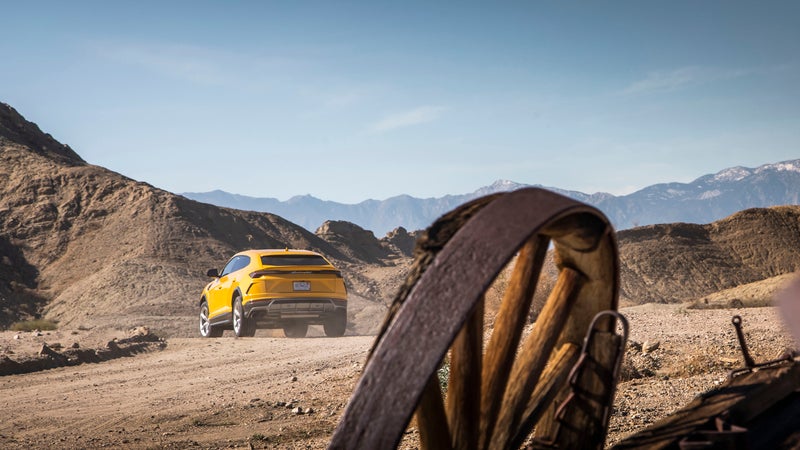
Design
In terms of looks, a Lamborghini should have only one goal: to be on posters in preteens’ bedrooms. With body lines so sharp you could use them to open a letter and an interior so wide it feels like it belongs to a power boat, the Urus is likely the most visually distinct crossover ever made. You’re not going to look at this car and think it’s anything other than a Lamborghini.
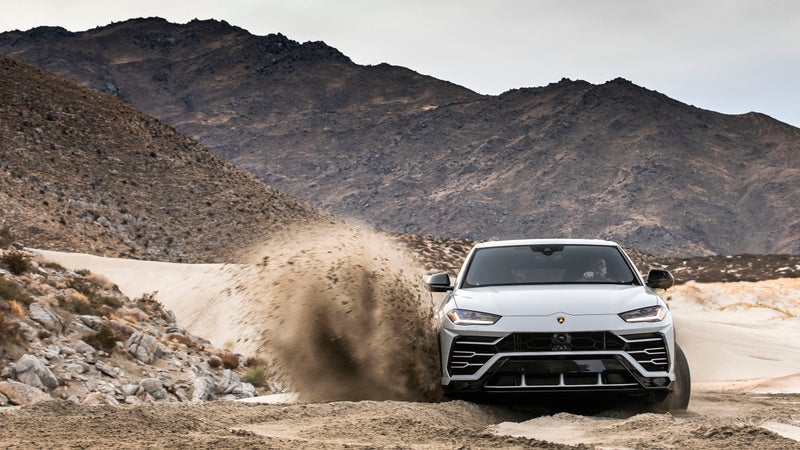
Driving It
Off-Road: Like other crossovers, the Urus uses unibody construction and all-wheel drive rather than the separate frame and four-wheel-drive of a true off-roader. It also lacks the low-range transfer case, large tires, and extreme angles that still endow the G-Wagen and Range Rover with true dirt chops. But on high-speed, nontechnical dirt roads and sandy washes, the Urus exceeds expectations.
Lamborghini’s engineers have done a great job putting together a suspension package that is compliant and predictable at speed and over bumps, while still comfortably absorbing bigger impacts and, at lower speeds, obstacles like rocks and ledges.
The Urus is fitted with an extremely complex all-wheel-drive system with active torque vectoring. Without giving you all the technical details, I can say that when taken off-road, it can electronically replicate the function of a locking center differential and axle diffs, effectively locking the speeds of all four wheels together when maximum traction is needed. All the driver has to do to enable this function is select an appropriate off-road driving mode; the Urus will handle the rest.
Given its ample power combined with very wide tires, it feels like the Urus will be an absolute hoot to drive on sand dunes. It even has a driving mode purpose-made for this—it makes power delivery more aggressive while maximizing traction. Can it land a jump though? We salute any owners with deep enough pockets to give that a try.
Race Track: The Urus also feels totally at home on the track. The standout feature here is the carbon-ceramic brakes—which, at 17.4 inches in diameter and fitted with ten-piston calipers, are the largest, most powerful brakes to ever appear on a production car. Stopping the 4,850-pound crossover from 62 miles per hour takes just 110 feet. That’s nearly as short a distance as the company’s two-door Huracán, which weighs just 3,424 pounds and stops from 62 miles per hour in 104 feet.
It’s because of these massive brakes that you’re really able to dip into every last bit of the Urus’s 650 horsepower. Entering corners on the track, I was able to brake later than I thought possible in an SUV. Then, once I was in that turn, the track-mode torque-vectoring system directs power to the outside wheels, countering understeer, while the four-wheel steering system effectively shortens the long wheelbase. The end result? This behemoth corners like a much smaller and lighter supercar.
Around Town: In more mundane everyday circumstances, the Urus is the quietest vehicle I’ve ever driven. Credit its stiff structure, compliant suspension, and ample sound deadening. That comfort, plus the friendly on-road driving modes, make it as easy to drive as a family crossover. But you will need to get used to the width. At 6.6 feet across, it’s as wide as a full-size pickup.
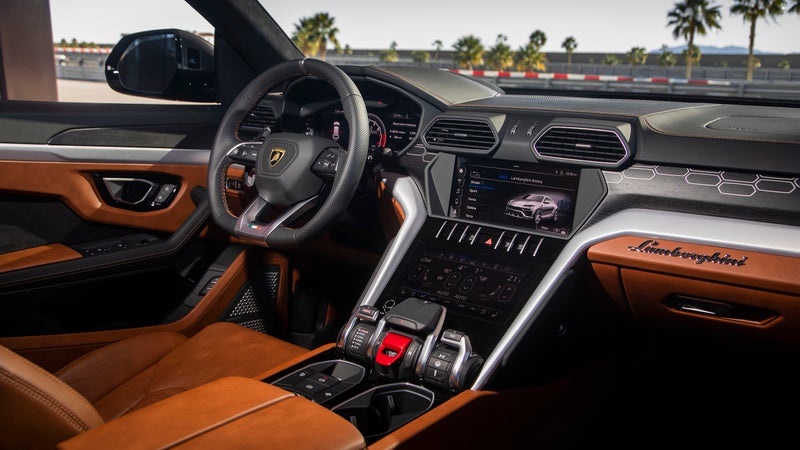
Likes
- The oil-change interval is 12,400 miles. Putting that much mileage on a Lamborghini used to necessitate an engine rebuild.
- Exceptionally good build quality. This thing is bolted together in a fashion that belies its exotic Italian heritage.
- Insanely quiet interior.
- Unbelievable track performance combined with pretty good off-road ability.
Dislikes
- Those big brakes mean the smallest wheels you can squeeze on are 21 inches in diameter, which severely limits trail performance.
- Beautiful from the front and sides; look at a Urus from the rear and it’s simply meh.
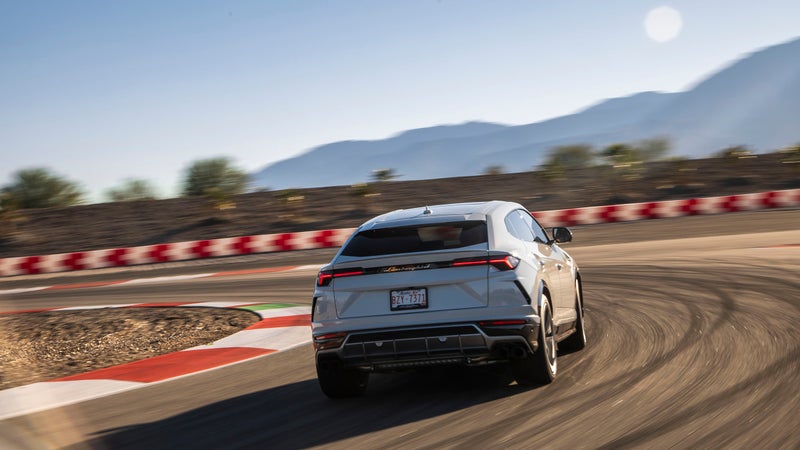
Should You Buy One?
The Urus costs about the same as a nice house. If you have that kind of money to spend on a crossover, then this is currently the most exciting on the market. By far. If I had that kind of money, it’d be my choice above a Range Rover or Bentley.
If you’re like me—you want one but can’t afford it—then I suggest taking a look at the . At nearly half the price (read: still expensive), it produces 707 horsepower from its supercharged V8. It just won’t handle nearly as well off-road or on the track.
